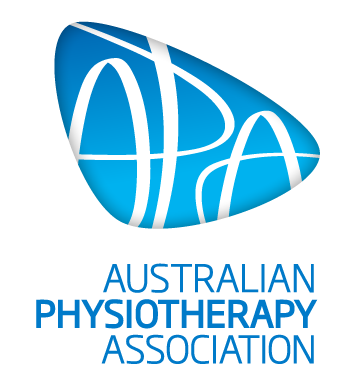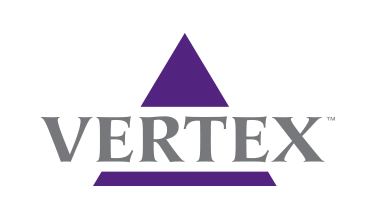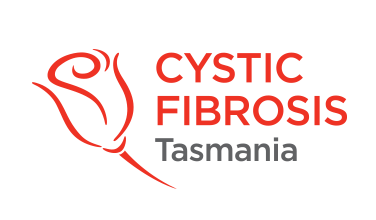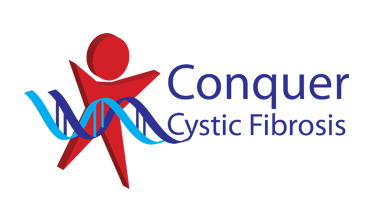Airway Clearance Techniques
LESSON 1: Physiological principles
McIlwaine M, Bradley J, Elborn S, Moran F. Personalising airway clearance in chronic lung disease. Eur Respir Rev. 2017;26:160086.
Zach MS, Oberwaldner B. CHEST PHYSIOTHERAPY. In: Taussig LM, Landau LI (eds). Paediatric Respiratory Medicine 2nd ed. St Louis, Mosby Inc., 2008 241-251. ISBN 978-0-323-04048-8
Physiotherapy for People with Cystic Fibrosis from infant to adult: International Physiotherapy Group. 5th edition, 2018. Chapter: Positive Expiratory Pressure, P. 12. Louise Lannefors
LESSON 2: Active Cycle of Breathing Technique
Button, B. M., Wilson, C., Dentice, et al. (2016) Physiotherapy for cystic fibrosis in Australia and New Zealand: A clinical practice guideline. Respirology, 21: 656–667. doi: 10.1111/resp.12764.
Robinson KA, Mckoy NA, Saldanha IJ, Odelola OA. (2010). Active cycle of breathing technique for cystic fibrosis. Cochrane Database of Systematic Reviews, Issue 11. Art. No.: CD007862. DOI: 10.1002/14651858.CD007862.pub2.
Physiotherapy for People with Cystic Fibrosis from infant to adult: International Physiotherapy Group. 5th edition, 2018. Chapter: Active Cycle of Breathing Technique, P. 5 Jennifer Pryor
LESSON 3: Autogenic Drainage
Agostini P, Knowles N. Autogenic drainage: the technique, physiological basis and evidence. Physiotherapy. 2007;93(2):157–63.
App EM, Kieselmann R, Reinhardt D, Lindemann H, Dasgupta B, King M, Brand P 1998. Sputum rheology changes in cystic fibrosis lung disease following two different types of physiotherapy: Flutter vs autogenic drainage. Chest 114: 171–177
Chevaillier J. Autogenic drainage (AD). In: Lawson D, Lawson D, editors. , editors. Cystic Fibrosis: Horizons. Chichester: John Wiley; (1984). 235 p.
Dab I, Alexander F. The mechanism of autogenic drainage studied with flow volume curves. Monogr Paediatr. 1979;10:50–3.
Davidson, A.G.F., Wong, L.T.K., Pirie, G.E., and McIlwaine, P.M. Long-term comparative trial of conventional percussion and drainage physiotherapy versus autogenic drainage in cystic fibrosis [abstract].Pediatr Pulmonol. 1992; 235
Elkins MR, Bye PTP Inhaled hypertonic saline as a therapy for cystic fibrosis. Curr Opin Pulm Med 2006;12:445–52
Giles DR, Wagener JS, Accurso FJ, Butler-Simon N 1995. Short-term effects of postural drainage with clapping vs autogenic drainage on oxygen saturation and sputum recovery in patients with cystic fibrosis. Chest 108: 952–954
Langenderfer, B. Alternatives to percussion and postural drainage. A review of mucus clearance therapies: percussion and postural drainage, autogenic drainage, positive expiratory pressure, flutter valve, intrapulmonary percussive ventilation, and high-frequency chest compression with the ThAIRapy Vest. Journal of Cardiopulmonary Rehabilitation1998;18(4):283-9.
Lannefors L, Button BM, McIlwaine M. Physiotherapy in infants and young children with cystic fibrosis: current practice and future developments. J R Soc Med (2004) 97(Suppl 44):8–25. [PMC free article] [PubMed]
Lee AL, Button BM, Tannenbaum EL. Airway-clearance techniques in children and adolescents with chronic Suppurative lung disease and Bronchiectasis. Front Pediatr. 2017;5:2.
Main E, Prasad A, Schans C. Conventional chest physiotherapy compared to other airway clearance techniques for cystic fibrosis. Cochrane Database Syst Rev. 2005;2(1)
McIlwaine M, Bradley J, Elborn S, Moran F. Personalising airway clearance in chronic lung disease. Eur Respir Rev. 2017;26:160086.
McIlwaine M, Wong LT, Chilvers M, Davidson GF. Long term comparative trial of two different chest physiotherapy techniques: postural drainage with percussion and autogenic drainage, in the treatment of cystic fibrosis. Pediatr Pulmomol (2010) 45(11):1064–9.10.1002/ppul.21247
McIlwaine PM, Davidson AGF. Comparison of positive expiratory pressure and autogenic drainage with conventional percussion and drainage therapy in the treatment of CF [abstract]. In: Proceedings of the 17th European cystic fibrosis conference, June 18–21, 1991, Copenhagen, p. S8.4.
Mead J, Turner JM, Macklem PT, Little J. Significance of the relationship between lung recoil and maximum expiratory flow. J Appl Physiol 1967;22:95-108
Miller S, Hall DO, Clayton CB, Nelson R 1995. Chest physiotherapy in cystic fibrosis: A comparative study of autogenic drainage and the active cycle of breathing techniques with postural drainage. Thorax 50: 165–169
Morgan, K., Osterling, K., Gilbert, R., & Dechman, G. (2015). Effects of Autogenic Drainage on Sputum Recovery and Pulmonary Function in People with Cystic Fibrosis: A Systematic Review. Physiotherapy Canada, 67(4), 319–326.
O’Connor C, Bridge P. Can the interrupter technique be used as an outcome measure for autogenic drainage in bronchiectatic patients? A pilot study. J Assoc Chart Physiother Respir Care (2005) 37:29–34.
Pfleger, A., Theißl, B., Oberwaldner, B., and Zach, M.S. Self-administered chest physiotherapy in cystic fibrosis: a comparative trial of high-pressure PEP and autogenic drainage. Lung. 1992; 170: 323–330
Pryor J, Tannenbaum E, Scott S, Burgess J, Cramer D, Gyi K, et al. Beyond postural drainage and percussion: airway clearance in people with cystic fibrosis. J Cyst Fibros (2010) 9:187–92.10.1016/j.jcf.2010.01.004
Schoni M. Autogenic drainage: a modern approach to physiotherapy in cystic fibrosis. J R Soc Med (1989) 82:32–7.
Thomas J, D.J Cook and D. Brooks. Chest Physical Therapy Management of Patients with Cystic Fibrosis: A Meta-analysis., Am J Respir Crit Care Med Vol 151. Pp846-850, 1995
Van Ginderdeuren F, Malfroot A, Verdonck J, et al. Influence of assisted autogenic drainage (AAD) and AAD combined with bouncing on gastro-oesophageal reflux (GOR) in infants under the age of 5 months. J Cystic Fibrosis 2003;2 (suppl1) : A251.
Van Ginderdeuren, F, Assisted Autogenic Drainage ( AAD) In: International Physiotherapy Group for Cystic Fibrosis (IPG/CF), editor. , editor. Physiotherapy for the Treatment of Cystic Fibrosis (CF). (2009). p. 10-11.
Van Ginderdeuren, F, Unpublished Course Outline from Applying Advanced Airway Clearance Techniques in complex settings across the lifespan, 2016.
Physiotherapy for People with Cystic Fibrosis from infant to adult: International Physiotherapy Group. 5th edition, 2018. Chapter: Autogenic Drainage, P. 9 Jean Chevaillier
LESSON 4: Positive Expiratory Pressure
Andersen JB, Falk M. Chest Physiotherapy in the Pediatric Age Group. Respiratory Care 1991; 36:546-552.
Constantini D, Brivio A, Brusa D, Delfino R, Fredella C,Russo et al. PEP-mask versus postural drainage in CF infants a long term comparative trial. Pulmonology 2001;Suppl 22:308.
Falk M, Kelstrup M, Andersen JB, Falk P, Stovring S, Gothgen I. Improving the Ketchup Bottle Method with Positive Expiratory Pressure (PEP), in Cystic Fibrosis. Eur J Resp Dis 1984;65:423-432.
Fagevik Olsén M, Carlsson M, Olsén E, Westerdahl E. Evaluation of pressure generated by resistors from different positive expiratory pressure devices. Respir Care 2015;60(10):1418-23.
Fagevik Olsén M, Lannefors L, Westerdahl E. Positive expiratory pressure – Common clinical applications and physiologic effects. Respir Med 2015;109:297-307.
Flores JS, Teixeira FÂ, Rovedder PM, Ziegler B, Dalcin Pde T. Adherence to airway clearance therapies by adult cystic fibrosis patients. Respir Care 2013;58(2):279-285.
Groth S, Stavanger G, Dirksen H, Andersen JB, Falk M, Kelstrup M. Positive Expiratory Pressure (PEP-mask) Physiotherapy improves Ventilation and reduces Volume of Trapped Gas in Cystic Fibrosis. Clin Respir Physiol 1985;21:339-343.
Lannefors L, Wollmer P. Mucus Clearance with Three Chest Physiotherapy Regimens in Cystic Fibrosis: a Comparison between Postural Drainage, PEP and Physical Exercise. Eur Resp J 1992;5:748-753.
McIlwaine MP, Alarie N, Davidson GF, Lands LC, Ratjen F, Milner R, Owen B, Agnew JL. Long-term multicentre randomised controlled study of high frequency chest wall oscillation versus positive expiratory pressure mask in cystic fibrosis. Thorax 2013;68(8);746-751.
McIlwaine M, Button B, Dwan K. Using positive expiratory pressure physiotherapy to clear the airways for people with cystic fibrosis. Cochrane Database of Systemic Reviews 2015, 17;6:CD003147.doi:10.1002/14651858
McIlwaine M, Button B, Nevitt SJ. Positive expiratory pressure physiotherapy for airway clearance in people with cystic fibrosis. Cochrane Database of Systematic Reviews 2015 , Issue 6 . Art. No.: CD003147. DOI: 10.1002/14651858.CD003147.pub4 . 2018
McIlwaine PM, Wong LT, Peacock D, Davidson AG. Long-term Comparative Trial of Conventional Postural Drainage and Percussion versus Positive Expiratory Pressure Physiotherapy in the Treatment of Cystic Fibrosis. J Pediatr 1997;131:570-574.
McIlwaine PM, Wong LT, Peacock D, Davidson AG. Long-term Comparative Trial of Positive Expiratory Pressure versus Oscillating Positive Expiratory Pressure (Flutter) Physiotherapy in the Treatment of Cystic Fibrosis. J Pediatr 2001;138:845-850.
Mortensen J, Falk M, Groth S, Jensen C. The Effects of Postural Drainage and Positive Expiratory Pressure Physiotherapy on Tracheobronchial Clearance in Cystic Fibrosis. Chest 1991;100:1350-1357.
Oberwaldner B. Physiotherapy for airway clearance in paediatrics. Eur Respir J 2000;15:196-204.
Pryor J, Tannenbaum E, Scott SF, Burgess J, Cramer D, Gyi K, Hodson ME. Beyond postural drainage and percussion: Airway clearance in people with cystic fibrosis. J Cyst Fibros 2010;9(3):187-192.
Tonnesen P, Stovring S. Positive Expiratory Pressure (PEP) as Lung Physiotherapy in Cystic Fibrosis. Eur J Respir Dis 1984;65:419-422.
Van Asperen PP, Jackson I, Hennesey P, Brown J. Comparison of Positive Expiratory Pressure (PEP) Mask with Postural Drainage in Patients with Cystic Fibrosis. Aust Paed J 1987;23:283-284.
Van der Schans CP, van der Mark TW, de Vries G, Piers DA, Beekhuis H, Dankert-Roelse JE, Postma DS, Koëter GH. Effect of positive expiratory pressure breathing in patients with cystic fibrosis. Thorax 1991;46(4):252-6.
LESSON 5: Oscillating Positive Expiratory Pressure
Althaus P et al. The Bronchial Hygiene Assisted by the Flutter VRP1 (Module Regulator of a Positive Pressure Oscillation on Expiration). Eur Resp J vol. 2, suppl 8; 693, 1989.
Alves LA, Pitta F, Brunetto AF, Performance analysis of the Flutter VRP1 under different flows and angles. Respir Care 2008;53:316e23.
Andersen JB & Falk M., (1991), Chest physiotherapy in the Paediatric Age Group. Respiratory Care, 36, pp546-554
Apps EM, Kieselmann R, Reinhardt D, et al. Sputum rheology changes in cystic fibrosis lung disease following two different types of physiotherapy. Flutter vs autogenic drainage. Chest1998;114:171–7.
Bellone A, Lascioli R, Rashi S, Guzzi L, Adone R. Chest physical therapy in patients with acute exacerbation of chronic bronchitis: effectiveness of three methods. Archives of Physical Medicine & rehabilitation. 2000;81(5):558-60.
Bjorkqvist M. et al, (1997), Bottle-blowing in Hospital Treated Patients with Community Acquired Pneumonia, Scandinavian Journal of Infectious Diseases, 29, pp77-82
Brooks D, Newbold E, Kozar LF, Rivera M.The flutter device and expiratory pressures. J Cardiopulm Rehabil. 2002 Jan-Feb; 22(1):53-7.
Campbell T. et al, (1986), The Use of a Simple Self-administered Method of Positive Expiratory Pressure (PEP) in Chest Physiotherapy after Abdominal Surgery, Physiotherapy, 72 (10), pp498-500.
Casaulta Aebischer C., U. Frey, A. Schibler, and R. Kraemer. Efficacy of chest physiotherapy (CPT) (PEP mask versus Flutter) in patients with cystic fibrosis (CF). Annual Congress of the European Respiratory Society (ERS), Firence, September 25-29, 1993. Eur Respir J 6; (suppl 17) 220s, 1993
Cegla UH, Bautz M, Fröde G, Werner T, Physical therapy in patients with COPD and tracheobronchial instability–comparison of 2 oscillating PEP systems (RC-Cornet, VRP1 Desitin).
Chicayban LM, ZinWA, GuimarãesFS, Can the Flutter Valve improve respiratory mechanics and sputum production in mechanically ventilated patients? A randomized crossover trial. Heart & Lung 40 (2011) 545-553.
de Lima LC, Duarte JBF, Lepore Neto FP, Abe PT, Gastaldi AC.,Mechanical evaluation of respiratory device. Med Eng Phys 2005;27:181e7.
Eaton T, Young P, Zeng I, Kolbe J. A randomized evaluation of the acute efficacy, acceptability and tolerability of flutter and active cycle of breathing with and without postural drainage in noncystic fibrosis bronchiectasis.Chron Respir Dis. 2007;4(1):23-30.
Flume PA, Cystic Fibrosis Pulmonary Guidelines: Airway Clearance Therapies Respir Care 2009;54(4):522–537.
Gondor M, Nixon PA, Mutich R, Rebovich P, Orenstein DM. Comparison of Flutter device and chest physical therapy in the treatment of cystic fibrosis pulmonary exacerbation. Pediatr Pulmonol 1999; 28(4):255–260.
Gumery L, Dodd M, Parker A, Prasad A, Pryor J. Clinical guidelines for the physiotherapy management of cystic fibrosis. Cystic Fibrosis Trust 2002.
Homnick DN, Anderson K, Marks JH. Comparison of the flutter device to standard chest physiotherapy in hospitalized patients with cystic fibrosis: a pilot study. Chest 1998;114(4):993–997.
Konstan MW, Stern RC, Doershuk CF. Efficacy of the Flutter device for airway mucus clearance in patients with cystic fibrosis. J Pediatr 1994;124(5 Pt 1):689–693.
McIlwaine PM, Wong LTK, Peacock D, et al. Long-term comparative trial of positive expiratory pressure versus positive expiratory pressure (flutter) physiotherapy in the treatment of cystic fibrosis. J Pediatr2001;138:845–50.
Morrison L, Agnew J. Oscillating devices for airway clearance in people with cystic fibrosis. Cochrane Database Syst Rev. 2014 Jul 20;7
Myers RT, Positive Expiratory Pressure and Oscillatory Positive Expiratory Pressure Therapies Respir Care 2007;52(10):1308–1326
Oermann Christopher M., Swank Paul R. and Sockrider Marianna M. Validation of an Instrument Measuring Patient Satisfaction With Chest Physiotherapy Techniques in Cystic Fibrosis Chest2000; 118;92-97
Oslén FM, Lannefors L, Weterdahl E, Positive expiratory pressure – Common clinical applications and physiological effects. Respiratory Medicine (2015) 109, 297e307.
Pereira dos Santos A., Guimaraes RC., de Carvalho EM., Gastaldi AC., Mechanical Behaviors of Flutter VRP1, Shaker, and Acapella DevicesRespir Care 2013;58(2):298 –304.
Pryor JA, Webber BA, Hodson ME, et al. The Flutter VRP1 valve as an adjunct to chest physiotherapy in cystic fibrosis. Respir Med1994;88:677–81.
Pryor JA, Tannenbaum E, Scott SF, Burgess J, Cramer D, Gyi K, Hodson ME, Beyond postural drainage and percussion: Airway clearance in people with cystic fibrosis. J Cyst Fibros 2010,9:187–192.
Results of a randomized prospective study of 90 patients, Pneumologie (Stuttgart, Germany) [1997, 51(2):129-136.
Rosière J, Vader JP, Cavin MS, et al. Appropriateness of respiratory care: evidence-based guidelines. SWISS MED WKLY 2009;139(27-28):387–392
Tambascio JT, de Souza LT, Lisboa RM, Passarelli RV, de Souza HD, Gastaldi AC, The influence of Flutter VRP1 components on mucus transport of patients with bronchiectasis, Respiratory Medicine (2011) 105, 1316e1321.
Thompson C S, Harrison S, Ashley J, Day K and Smith D L. Randomised crossover study of the Flutter deviceand the active cycle of breathing technique in non-cystic fibrosis bronchiectasis. Thorax 2002;57;446-448.
Van Fleet H, Dunn DK, McNinch NL, Volsko TA. Evaluation of functional characteristics of 4 oscillating positive pressure devices in a simulated cystic fibrosis model. Respiratory Care April 2017, 62(4) 451-458
van Winden CM, Visser A, Hop W, Sterk PJ, Beckers S, de Jongste JC. Effects of flutter and PEP mask physiotherapy on symptoms and lung function in children with cystic fibrosis. Eur Respir J 1998; 12(1):143–147.
Volsko TA, DiFiore J,Chatburn RL. Performance comparison of two oscillating positive expiratory pressure devices: Acapella versus Flutter. Respir Care. 2003 Feb; 48(2):124-30.
Physiotherapy for People with Cystic Fibrosis from infant to adult: International Physiotherapy Group. 5th edition, 2018. Chapter:Oscillating Positive Expiratory Pressure, P17,18,19 Peter Suter
LESSON 6: Positioning and manual techniques
Button BM, Heine RG, Catto-Smith AG, Olinsky A, Phelan PD, Ditchfield MR, Story I. Chest physiotherapy in infants with cystic fibrosis: to tip or not? A fiveyear study Pediatr Pulmonol
. 2003;35(3):208-13.
Button BM,Heine RG, Catto-Smith AG, Phelan PD,Olinsky A. Postural drainage and gastr
ooesophageal reflux in infants with cystic fibrosis. Arch Dis Childhood 1997;76:148-50.
Desmond KJ, Schwenk WF, Thomas E, Beaudry PH, Coates AL. Immediate and long-term effects of chest
physiotherapy in patients with cystic fibrosis. J Pediatr 1983;103:53-8
Passero MA, Remor B, Salomon J. Patient reported compliance with cystic fibrosis therapy. Clin Pediatr
1981;20:264-6.
Reisman JJ, Rivington-Law B, Corey M,Marcotte J,Wannamaker E,Harcourt D, et al. Role of
conventional physiotherapy in cystic fibrosis. J Pediatr 1988;113:632-636
McIlwaine PM, Wong LT, Peacock D, Davidson AG. Long‐term comparative trial of conventional postural drainage and percussion versus positive expiratory pressure physiotherapy in the treatment of cystic fibrosis. Journal of Pediatrics 1997;131(4):570‐4.
LESSON 7: Intrapulmonary percussive ventilation using the Metaneb
Antonaglia V, Lucangelo U, Zin WA, Peratoner A, De Simoni L, Capitanio G, Pascotto S, Gullo A. Intrapulmonary percussive ventilation improves the outcome of patients with acute exacerbation of chronic obstructive pulmonary disease using a helmet. Crit Care Med. 2006 Dec;34(12):2940-5.
Birnkrant DJ, Pope JF, Lewarski J, Stegmaier J, Besunder JB. Persistent pulmonary consolidation treated with intrapulmonary percussive ventilation: a preliminary report. Pediatr Pulmonol. 1996 Apr;21(4):246-9.
Bocci M, Garcia JA, Timon B, Wolff R, Hargett K, Thornton C. A case study: the use of Metaneb to improve secretion removal and reverse atelectasis. Resp Care. 2006. Open Forum Abstracts.
Clini EM, Antoni FD, Vitacca M, Crisafulli E, Paneroni M, Chezzi-Silva S, Moretti M, Trianni L, Fabbri LM. Intrapulmonary percussive ventilation in tracheostomized patients: a randomized controlled trial. Intensive Care Med. 2006 Dec,32(12):1994-2001. Epub 2006 Oct 24.
Paneroni M, Clini E, Simonelli C, Bianchi L, Antoni FD, Vitacca M. Safety and efficacy of short-term intrapulmonary percussive ventilation in patients with bronchiectasis. Respir Care. 2011 Jul;56(7):984-988.
Reardon CC, Christiansen D, Barnett ED, Cabral HJ. Intrapulmonary percussive ventilation vs incentive spirometry for children with neuromuscular disease. Arch Pediatr Adolesc Med. 2005 Jun;159(6):526-31.
Reper P, van Looy K. Chest physiotherapy using intrapulmonary percussive ventilation to treat persistent atelectasis in hypoxic patients after smoke inhalation. Burns (2012), http://dx.doi.org/10.1016/j.burns.2012.04.015
Toussaint M, De Win H, Steens M, Soudon P. Effect of intrapulmonary percussive ventilation on mucus clearance in duchenne muscular dystrophy patients: a preliminary report. Respir Care. 2003 Oct;48(10):940-7.
Vargas F, Boyer A, Bui HN, Guenard H, Gruson D, Hilbert G. Effect of intrapulmonary percussive ventilation on expiratory flow limitation in chronic obstructive pulmonary disease patients. J Crit Care. 2009 Jun;24(2):212-9. Epub 2008 May 14.
Vargas F, Bui HN, Boyer A, Salmi LR, Gbikpi-Benissan G, Guenard H, Gruson D, Hilbert G. Intrapulmonary percussive ventilation in acute exacerbations of COPD patients with mild respiratory acidosis: a randomized controlled trial [ISRCTN17802078]. Crit Care. 2005 Aug;9(4):R382-9. Epub 2005 Jun 1.
LESSON 8: High PEP
Oberwaldner B. Hi-PEP. In: Gursli S, editor. Physiotherapy in the treatment of cystic
fibrosis. 3rd ed: International Physiotherapy Group/ Cystic Fibrosis; 2003. p. 20-3.
Oberwaldner B, Evans JC, Zach MS. Forced expirations against a variable resistance:
a new chest physiotherapy method in cystic fibrosis. Pediatr Pulmonol.
1986;2(6):358-67.
Oberwaldner B, Theissl B, Rucker A, Zach MS. Chest physiotherapy in hospitalized
patients with cystic fibrosis: a study of lung function effects and sputum production.
Eur Respir J. 1991;4(2):152-8.
LESSON 9: High Frequency Chest Wall Oscillator
Arens R, Omlin KJ, Vega J, Boyd KP, Keens TG, Woo MS. Comparison of high frequency chest compression and conventional chest physiotherapy in hospitalized patients with cystic fibrosis. American Journal of Respiratory and Critical Care Medicine 1994;150:1154-7.
Braggion C, Cappelletti LM, Cornacchia M, Zanolla L, Mastella G. Short-term effects of three chest physiotherapy regimens in patients hospitalized for pulmonary exacerbations of cystic fibrosis: A cross-over randomized study. Paediatric Pulmonology 1995;19:16-22.
Bauer ML, McDougal J, Schoumacher RA. Comparison of manual and mechanical chest percussion in hospitalized patients with cystic fibrosis. The Journal of Pediatrics 1994;124:250-4.
Darbee JC, Kanga JF, Ohtake PJ. Physiologic evidence for high-frequency chest wall oscillation and positive expiratory pressure breathing in hospitalized subjects with cystic fibrosis. Physical Therapy 2005;85:1278-89.
Kluft J, Beker L, Castagnino M, Gaiser J, Chaney H, Fink RJ. A comparison of bronchial drainage treatments in cystic fibrosis. Pediatric Pulmonology 1996;22:271-4.
McIlwaine MP, Alarie N, Davidson GF, Lands LC, Ratjen F, Milner R, Owen B, Agnew JL. Long-term multicentre randomised controlled study of high frequency chest wall oscillation versus positive expiratory pressure mask in cystic fibrosis. Thorax 2013;68:746–51.
Oermann CM , Sockrider MM, Giles D, Sontag MK, Accurso FJ, Castile RG. Comparison of high-frequency chest wall oscillation and oscillating positive expiratory pressure in the home management of cystic fibrosis: a pilot study. Pediatric Pulmonology 2001;32:372-7.
Osman LP, Roughton M, Hodson ME, Pryor JA. Short-term comparative study of high frequency chest wall oscillation and European airway clearance techniques in patients with cystic fibrosis. Thorax 2010;65:196-200.
Phillips GE, Pike SE, Jaffe A, Bush A. Comparison of active cycle of breathing and high-frequency oscillation jacket in children with cystic fibrosis. Pediatric Pulmonology 2004;37:71-5.
Scherer T, Barandun J, Martinez E, Wanner A, Rubin EM. Effect of high-frequency oral airway and chest wall oscillation and conventional chest physical therapy on expectoration in patients with stable cystic fibrosis. Chest 1998;113:1019-27.
Stites SW, Perry GV, Peddicord T, Cox G, McMillan C, Becker B. Effect of high frequency chest wall oscillation on the central and peripheral distribution of aerosolized diethylene triamine penta-acetic acid as compared to standard chest physiotherapy in cystic fibrosis. Chest 2006;129:712-7.
Varekojis SM, Douce FH, Flucke RL, Filbrun DA, Tice JS, McCoy KS, Castile RG. A comparison of the therapeutic effectiveness of and preference for postural drainage and percussion, intrapulmonary percussive ventilation, and high-frequency chest wall compression in hospitalized cystic fibrosis patients. Respiratory Care 2003;48:24-8.
Warwick WJ, Hansen LG. The long-term effect of high-frequency chest compression therapy on pulmonary complications of cystic fibrosis. Pediatric Pulmonology 1991;11:265-71.
Warwick WJ, Wielinski CL, Hansen LG. Comparison of expectorated sputum after manual chest physical therapy and high-frequency chest compression. Biomedical Instrumentation & Technology 2004;38:470-5.
LESSON 10: Non invasive ventilation
Alison J.A, Donnelly P.M, Lennon M, Parker S, Torzillo P, Mellis C, et al.The effect of a comprehensive, intensive inpatient treatment program on lung function and exercise capacity in patients with cystic fibrosis. Phys Ther., 74 (1994), pp. 583-591
Bott J, Blumenthal S, Buxton M, Ellum S, Falconer C, Garrod, R, White, J. (2009). Guidelines for the physiotherapy management of the adult, medical, spontaneously breathing patient. Thorax 64(Suppl 1), 1-51
Dwyer TJ, Robbins L, Kelly P et al. Non-invasive ventilation used as an adjunct to airway clearance treatments improves lung function during an acute exacerbation of cystic fibrosis: a randomised trial. J Physiother. 2015 Jul;61(3):142-7.
Holland AE, Denehy L, Ntoumenopoulos G, et al. Non-invasive ventilation assists chest physiotherapy in adults with acute exacerbations of cystic fibrosis. Thorax 2003;58:880-884.
Moran F, Bradley JM, Piper AJ. Non-invasive ventilation for cystic fibrosis. Cochrane Database of Systematic Reviews 2017, Issue 2.
Stanford, G., Parrott, H., Bilton, D. and Agent, P. (2015). Positive Pressure – analysing the effect of the addition of non-invasive ventilation (NIV) to home airway clearance techniques (ACT) in adult cystic fibrosis (CF) patients. Physiotherapy theory and practice, 31:4, 270-274
LESSON 10: Cleaning and Maintenance
Manor, E., Gur, M., Geffen, Y. & Bentur, L. (2017) Cleaning and infection control of airway clearance devices used by CF patients. Chronic Respiratory Disease, 14 (4), 370-376









